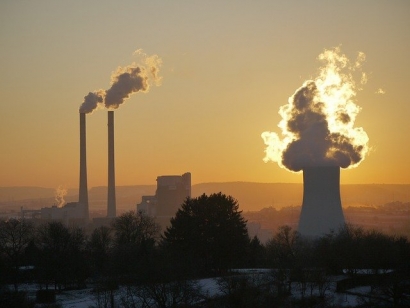
The Paris Agreement calls for new energy conservation methods, hoping to reduce greenhouse gas emissions. Fortunately, environmental engineers and scientists have developed green technology, limiting the environmental impact of sanitation. We can use sustainable devices to purify water and air, reducing the spread of diseases.
A key ingredient to sanitized areas is clean water. Over 2.1 billion individuals lack access to safe drinking water. The poor quality of this natural resource correlates with adverse health effects.
India is one of the most water-scarce regions. It also faced a devastating second wave of COVID-19, unlike any other country. Areas with poor water quality can utilize renewable energy-driven systems, increasing sanitation measures.
One device generates clean water in even the driest climates. The Zero Mass Water system extracts potable water from the air. Its solar panel converts sunlight to heat, warming the localized atmosphere.
The device promotes condensation development. It blows air into the device using a high-powered fan and absorbs water through a porous material. A 30-liter container catches the condensation and infuses it with minerals and ozone for purification. Communities can then use the purified water to clean surfaces and produce disinfectants.
Other renewable power-driven devices extract potable water from undrinkable sources for sanitation. Though most of the planet is water, we can only drink a small portion of it. Environmental engineers created a sustainable technology that purifies non-freshwater for safe human use. The device can convert saltwater, brackish water, and even contaminated water into a clean resource.
The system rests on the surface of an undrinkable water source. It heats the solution below using solar energy, allowing clean water to rise. Extracted materials are filtered and purified for sanitation purposes.
The extraction and purification technique generates clean water and accessible renewable power. It operated at a 100% efficiency rate, gathering enough liquid to sustain four individuals per day.
Renewable energy systems can also sanitize indoor air. Geothermal heating, ventilation, and air conditioning (HVAC) systems utilize Earth’s natural temperature gradient. It provides renewable power for buildings, filtering the localized pollutants.
You can test the purity of your air using the Minimum Efficiency Reporting Value system. It rates your ventilation device based on its efficiency and effectiveness, ensuring the capture and removal of airborne illnesses. Using a geothermal HVAC system can optimize your air quality by limiting localized greenhouse gas emissions.
Air purity is essential to individuals' health and well-being throughout the pandemic and beyond. The Centers for Disease Control and Prevention (CDC) asks building owners to improve ventilation, reducing the spread of airborne diseases. High sanitation standards fueled by renewable energy can protect society and the global ecosystem.
Certain sanitation facilities are utilizing fuel cell energy to filter wastewater while generating renewable power. The wastewater treatment plant at Munster in West Australia recently established a biogas production project. Their $15.8 million in funding helped them install a system that extracts hydrogen from wastewater.
The sanitation system uses a microbial fuel cell. Microorganisms convert biodegradable organic matter into a direct electric current. The process also purifies wastewater, generating a drinkable solution.
Less developed countries can utilize fuel cell-powered water sanitation systems with deregulated energy infrastructures. Puerto Rico struggles with contamination episodes and clean water scarcity. They also outsource their fossil fuels, generating large quantities of greenhouse gas emissions.
The U.S. privatized energy sector can provide clean electricity and water purification systems to Puerto Rico with fuel cell power. With advanced green technology, countries worldwide could increase their access to adequate sanitation and shrink their carbon footprint.
The pandemic provided global society with an energy awakening. It allowed us to reevaluate the health industry’s power sources and optimize sustainability. When we utilize renewable energy to fuel sanitation, we can meet the Paris Agreement’s goals while limiting the spread of COVID-19.

